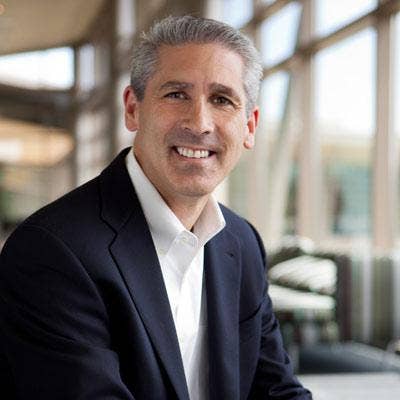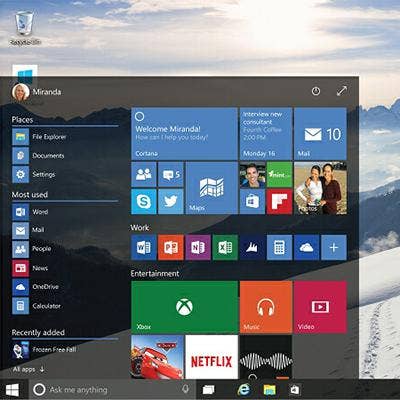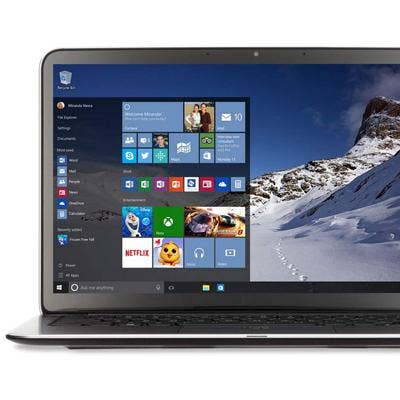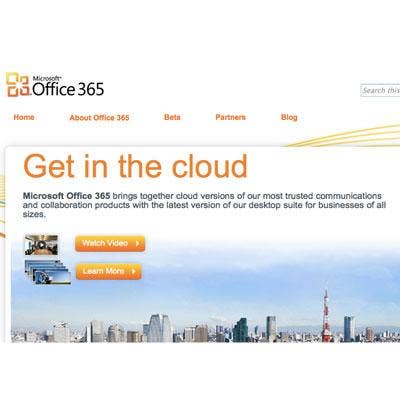CRN Exclusive: Microsoft's New Channel Chief On Windows 10 Channel Compensation, Partner Plans For Surface And Cloud Opportunities

New Channel Chief On The Record
Gavriella Schuster, a Microsoft veteran of 21 years, is set to take over as the software giant's new global channel chief, a role she has been filling in an interim capacity for the last month.
The new corporate vice president of Microsoft's Worldwide Partner Group spoke to CRN about overseeing and facilitating Microsoft solution providers as they migrate the world's largest customer base to Windows 10. She also talked about her plans for leading Microsoft's channel as it continues the transition from focusing on large projects to selling subscription cloud services, as well as what it's like stepping into a role vacated by her mentor of more than a decade, Phil Sorgen.

It seems just about every time we talk to a newly appointed channel chief, they say, 'Give me four weeks to figure this out.' For you it's probably going to be a lot easier since you already know the Microsoft program as well as anyone.
Yes, but there's still a ramp-up into the new role, that's for sure.

What motivated the change? Why is there a shift in leadership happening now in Microsoft's channel, and what will you do differently from your predecessor?
[Former global channel chief] Phil Sorgen [pictured] has been with the company for a long time. He's actually been my mentor for probably a decade. And he had an opportunity to head up another part of the business.
He probably would have wanted another year or so in this role with our partners, but you can't always predict when new opportunities come up and the timing was really good for him and his own personal growth.
And [he] felt comfortable that he had brought me in specifically to be his successor in the role, so he felt comfortable that we're at a good place and that we can have a smooth transition. I feel confident we can have a smooth transition to continue to develop our partners and continue to grow the ecosystem in the direction of cloud and profitability.

How do you plan to harness the power of the channel around Windows 10 subscriptions and license agreements to sell more in a subscription-based model?
There's a lot of back-end migration tools and systems that make that a smooth process for our customers. We have a high degree of application compatibility, which has traditionally been one of the blockers. We also have tools for applications that may or may not be compatible and tools for partners in making that an easy move.
I think that the business model for partners in Windows-as-a-service really opens up the door for them to say that, "This isn't just a 'one and done' deployment role that I can play for the customer. I can help you manage this environment over time." I think that's a lot of the opportunity and the tools that we're providing to the partners to enable them to build a new business with our Windows and devices practices.

What are your priorities around Windows 10 and sales compensations?
We see tremendous momentum on Windows 10. I think it is the best operating system that we have ever released. It is definitely the most secure operating system we have ever released. I think in a world where the security threat has never been higher – there are more hackers in the world than there ever have been – customers are really latching onto the opportunity to get to the most secure platform for them, which would be Windows 10. So I think that our priority is about making sure our partners are focused on helping customers make that move and really driving out that Windows 10 deployment. We're investing heavily in enablement for those partners, in support, in business investment funds, and in programs to support partners who are doing desktop deployment.

What will you say about Windows 10 at next month's Worldwide Partner Conference?
We will have more momentum and announcements coming at WPC focused on some of those investments and the momentum around that. You add to that the opportunity and upside around the devices – around Surface and Surface Hub, and [Internet of Things] and HoloLens – that's where a lot of partners see an opportunity to significantly expand their business across the customers' entire portfolio and think about that operating system and opportunity in a way they have never been able to do before. It goes from the individual through the organization and the value it can deliver at any end point. I think that that's where I see partners get really excited and their eyes light up, when they see that they can use the universal app to build solutions and applications for the customer that will work on the mobile devices through their daily tablets and PCs all the way up to the Surface Hub that they can use in the conference room, to get an end-to-end experience.
What are your plans for the Surface Pro channel? Last year Microsoft said it was broadening its channel reach for Surface products. Do you want to continue expanding that area?
We have a great deal of momentum behind the partners who are reselling the Surface. Just before WPC you'll start to see a lot of that momentum come out in the next few weeks. We are continuing those programs – continuing to make it profitable and easy for partners who wish to include Surface and devices into the delivery that they give to customers – for them to participate in that ecosystem, especially as we engage more distribution partners as well.

Will your tenure introduce any significant changes, other management or program structure changes? Or is the goal to have a seamless transition?
It'll be a seamless transition as far as our partners go.
We were on a path to increase partner profitability, to enable our partners to capture this tremendous upside in the new cloud and mobility world that their customers are very rapidly moving to, and we had a lot of investments under way already. So I have no plans to do some left turn somewhere else. That is exactly where we need to go with our partners, and [we will] continue to invest in helping our partners move up the food chain from project services to managed services and take advantage of the cloud repeatability, scalability framework and even turning a lot of that into IP that they can monetize with their customers.
Those are the areas we'll continue to invest in heavily, as well as making that partner's journey easier for them -- make it easier to grow their business, easier to do business with Microsoft, continue to invest in go-to-market motions like we have with the Cloud Solution Provider program, where it just makes more sense in a modern world to do business in a modern way.

Can you update us on the Cloud Solution Provider program?
We have engaged a strong set of partners who are delivering those services directly to customers and then partners who have chosen to indirectly deliver them through our hosting and distribution providers. The business model seems to work really, really well. I've had a number of partners look at me and say, 'Look, when you were telling me three years ago what you really need to do is package up your services and deliver them as a subscription and create long-term customer value, I looked at you with a blank stare ... And then you guys came out with CSP, where in order to reach the customer I had to think about what is this monthly billing, what is this subscription offering, how am I going to package what I typically sold as a one-time service to a customer into and on top of the monthly service subscription of an Office 365 or an Azure ...Suddenly I had realized I had developed a packaged offering.'
And this is what [they] said, 'I can tell you now 60 percent of my business is on these packaged offerings and subscriptions I'm filling for my customers, and every new thing I do is delivered in this way and I will never deliver a project service again.'
The value the CSP provided was that it was this vehicle that suddenly helped a lot of our partners understand how to actually think differently about the service you deliver to your customer.

Microsoft was starting to introduce Azure both as an IaaS and PaaS offering to CSP partners. Are you seeing them go down the stack?
Azure services lend themselves even better to the CSP model than even Office 365, because with Azure you get what is basically a platform where you're going to build a virtual machine, or you're going to build a PowerBI structure, or you're going to build a data analytics solution or a database solution. The partner in that sense can actually aggregate a set of solutions and package them.
In the new model of Azure and CSP, the provider, the SI, can actually build a virtual machine that has the underlying operating system, build on top of that the database and the means of capturing the data for the customer, whether that's big data or structured data, and then on top of that bring in either fully finished third-party solutions or their own solutions, and say to the customer, 'Look I have an offering that does what you're looking to do, in, let's say financial services, to manage the customer, and this is how you log into my service.' ... The CSP program, that license model, gives them a way to take all those pieces and put them together as one monthly subscription versus the six or 10 pieces it would have been in a traditional licensing model. They can hide all of that complexity from the customer.

What are you doing to make sure partners are actually helping customers pay for only the cloud services they use? Last year, Microsoft was talking about reorganizing toward active usage billing.
We have done a lot of work within Microsoft's own business model. If you look at a lot of the analyst discussions, about driving customer consumption and active usage, that is our North Star. In a services world, we want to make sure that we have new monthly active usage going up, we see customer consumption rising. Those are the key levers that we focus on and that we're focused on with customers. So all of our incentives for partners are focused on the active usage of the Office 365 entitlements, or the units the customer bought, or on Azure it's not about the initial Azure revenue that we would pay incentives on but the consumption we see over time from the customer and then we pay the partner on that.

Office 365 E5 was an interesting addition to the portfolio and a serious entry into the telecommunications space. What kind of buy-in are you seeing from your partners in adding these services to their practices?
Depending on what level of service of the voice practice, the level of sophistication for the customer, it can be anything from a highly sophisticated setup to a fairly simple setup for a customer.
If a customer is just using Skype for Business, then we see for Office 365 partners a lot of pickup. That's another new service they can add on and they can help get a customer set up.
For a customer who's looking to replace their PBX, that can be a much more complicated process. So as you move up the pyramid you have much more traditional partners who have been in that voice practice in the past who really understand the ins-and-outs of networking and telecommunications services who are getting into that business. And I think that what we'll see in the coming year is a merging in the middle of that easy implementation to that super-complex implementation.
We'll probably see a lot of partnerships between partners who have had that traditional skill set as they scale into the broader market. Skype for Business opens up an opportunity that didn't exist before in the broader market and it was really limited to the highest-end customer. Traditional partners are the ones who are picking up the simpler implementations right away because they already have productivity-focused businesses and those customers.
There's a different business that exists at the very high end and I think we will see partners move up as they get more expertise and experience in voice practices, and we'll see the more traditional telecommunications partners moving down as they see they can scale these implementations to a much lower level than they have ever been able to before.

What your final rallying call for partners as channel chief?
There's more partner opportunity now than there ever has been for our partners, not only in the cloud and customers embracing cloud, but actually in what customers are calling their No. 1 priority, which is their own digital transformation. Customers want to move where technology is their differentiator in the market, and when they do this, the opportunity that expands for technology providers and advisers like our partners means that they move from the back office to the front office. It more than four-fold increases what their potential market is.
I'm excited to be in the leadership position to be able to open that opportunity up to our partners, expose it to them, help them see what is possible, and share all the best practices of what's going on in the industry as well as how to partner with each other to build better businesses. I'm really excited about this opportunity, I think there's a lot we can do together, and I'll be sharing more at WPC.